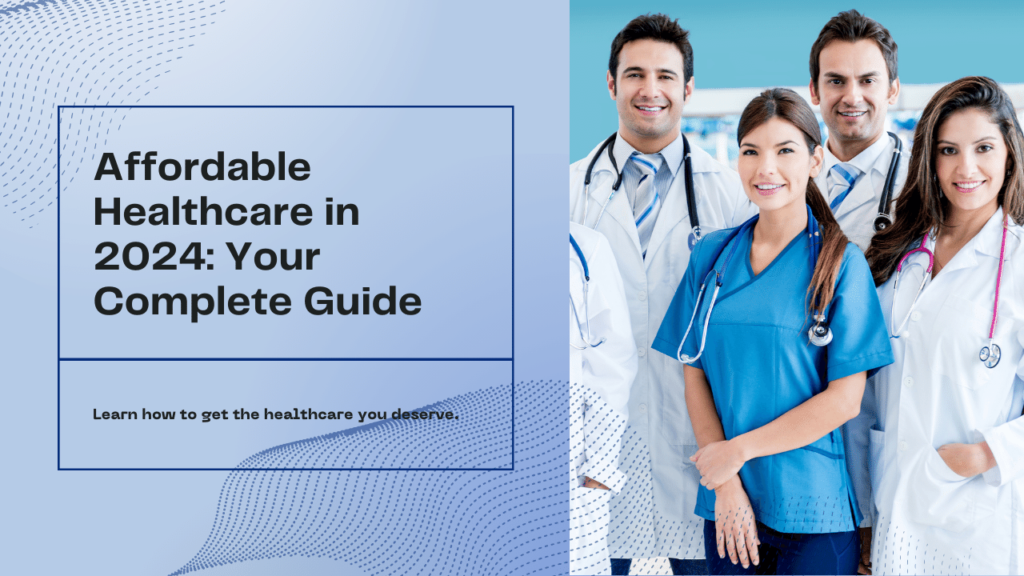In the intricate landscape of the American non-affordable healthcare system, where dollars and health are often entwined, a staggering $4.7 trillion is projected to be spent on healthcare in 2023. This colossal sum, equivalent to approximately 18% of the national economy, translates to an average of $12,530 per person annually, according to the Centers for Medicare and Medicaid Services. The relentless upward trajectory of healthcare costs in the U.S. poses a profound challenge, leading 41% of insured individuals to avoid seeking medical care even when it is essential.

In a society where health decisions are entangled with financial burdens, families nationwide find themselves making difficult choices, often sacrificing one vital aspect of well-being for another. This blog post seeks to unravel the complexities of healthcare costs, offering not only a roadmap to financial prudence but also insights into optimizing healthcare benefits.
Also read: Bold steps taken by Biden Govt to Reduce Healthcare Cost
1. Unveiling the Affordable Healthcare Pathway:
The journey toward affordable healthcare begins with understanding and maximizing insurance benefits, particularly in the realm of preventive care. A seasoned family healthcare professional emphasizes the pivotal role of routine check-ups, vaccinations, and cancer screenings in not only preserving health but also in curbing long-term costs. Early intervention, they note, significantly enhances the chances of limiting expensive complications and achieving favorable outcomes.
As we delve deeper into the labyrinth of healthcare, the importance of choosing the right facility emerges as a key factor in cost management. Beyond the choice of a healthcare provider, the alignment of facilities with insurance networks becomes paramount to avoid unexpected financial pitfalls.
2. Strategic Approaches to Medication Costs:
The blog post advocates for proactive measures to minimize prescription expenses. The healthcare professional recommends exploring lower-cost generic options, and the inclusion of apps like GoodRx and SingleCare, which unveil discounts of up to 80% on prescription medications. Moreover, the strategic establishment of a Health Savings Account (HSA) emerges as a financial shield against medical expenses. A medical expert sheds light on the tax advantages of an HSA, emphasizing its potential for long-term healthcare needs.
3. Unlocking Financial Assistance:
For those navigating the complexities of healthcare expenses, claiming the Premium Tax Credit (PTC) can be a game-changer. A renowned CPA and personal finance expert underscore the accessibility of this refundable credit, which can alleviate insurance premiums or lower monthly payments. Understanding the eligibility criteria becomes crucial, ensuring that individuals and families can harness this financial lifeline.
4. Strategic Decision-Making for Optimal Care:
Navigating the healthcare landscape involves knowing when to seek professional advice and understanding the various avenues available. The blog post introduces innovative solutions such as telehealth, providing discounted access to healthcare consultations, lab services, and medical treatment. A discussion on community health centers as hidden treasures of information, resources, and freebies is also woven into the narrative, revealing a plethora of services that often go unnoticed.
5. Harnessing the Power of Knowledge:
The journey to affordable healthcare transcends conventional wisdom, urging individuals to invest in their health proactively. Genetic testing, while not without limitations, presents an avenue for self-education. Direct-to-consumer genetic tests can offer insights into predispositions for certain conditions, empowering individuals to make informed lifestyle choices and initiate conversations with healthcare providers.
6. A Healthy Future:
In the concluding chapters of this healthcare odyssey, the blog post underscores the age-old adage that prevention is indeed better than cure. The healthcare professional emphasizes the significance of maintaining a healthy lifestyle as a fundamental strategy for keeping medical costs at bay. Choices such as staying at a healthy weight, regular exercise, and avoiding smoking emerge as not just practices for a healthier today but investments in a financially prudent and healthful tomorrow.
Conclusion:
As we navigate the intricate web of American healthcare, one thing becomes clear: the path to affordable care is multifaceted and requires strategic navigation. From leveraging insurance benefits to exploring telehealth and proactive genetic testing, each step contributes to a holistic approach to healthcare that is both economically sound and health-conscious.
The journey to optimal healthcare is not a one-size-fits-all equation; rather, it’s a personalized expedition that each individual must undertake. By making informed choices and embracing preventive measures, we can transform the narrative from one dominated by financial anxiety to a story of empowered health and financial well-being.
